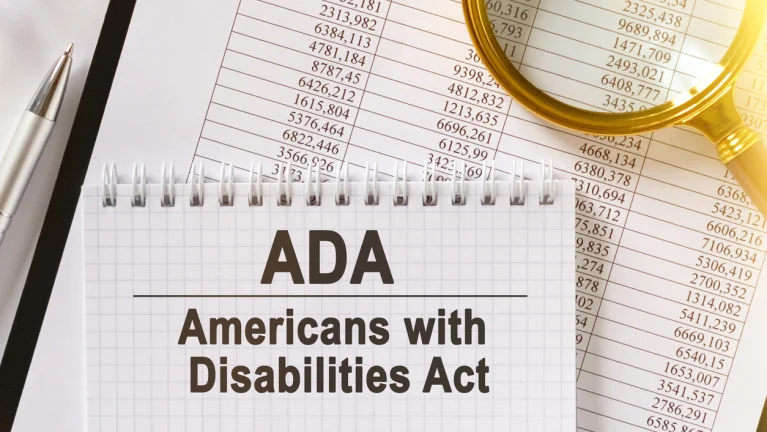Below is a review of the posts (on Facebook, LinkedIn, and X [formerly Twitter]) from the past week. You can check out the full posts by clicking on the links.

The post on Sunday 10/29/2023 was about ERISA (health and retirement) plan docs: Are you doing what the law requires? The law can be quite confusing. It contains specific requirements as to the documents covered employers must provide to their employees regarding their health plans. Mistakes can be costly (in terms of time and dollars). The documents can be prepared by attorneys, third-party administrators, or employers – with or without software and DOL guidance. But ultimately it’s the plan administrator who must make sure everything is done properly and legally. Let’s dive a bit deeper.
First is the ERISA plan document that lays out the rights, benefits and obligations of plan participants. It also identifies the plan administrator (who that can be is in the post). The plan also usually includes eligibility rules and the other things itemized in the post. The document must be created but need not be given to employees unless they request it. But if they do make a request? See the post.
Next is the summary plan description. This is really a simpler, easier to understand version of the plan document. It explains what is provided by the plan and how the plan operates. Federal regulations contain requirements as to its content, style and format (a bit of which is in the post). To whom and how and when the summary plan description must be distributed is discussed in the post. If electronic delivery is chosen, the participant may still request a hard (paper) copy. If they do that, what must happen in response is noted in the post.
Third is the benefits summary. Sometimes this is called the summary of benefits and coverage. It may help employees choose which coverage is best for them. To whom it is to be provides, when, and its contents is all in the post.
TAKEAWAY: All three of these documents must exist; get legal assistance if you do not have them.

The post on Monday 10/30/2023 talked about ADA workplace accommodations for skin conditions. Yes, employers need to know this. Employees often do not know what they can request from an employer, but that doesn’t necessarily relief the employer from its duty to accommodate. The first step is usually defining workplace limitations. Examples of skin conditions that might result in limitations include light sensitivity and the other things listed in the post. Once an employee makes a request for accommodation, the employer must engage in the interactive process. If the employer denies the request, what it must do to satisfy ADA requirements is noted in the post.
Let’s look more closely at the most common skin condition accommodations. First are skin irritations. Employees who have or get rashes, sores, and lesions can ask for (alternative) personal protective equipment (PPE) or, if possible and feasible, to have their PPE or uniform custom-made. There might also be other things employees might request by way of accommodation that the employer should consider; they are noted in the post.
Next is ultraviolet (UV) sensitivity. This might include limiting exposure to sun (think of employees who work outside) or certain indoor lighting. So what types of accommodation might be appropriate? There is a sample list in the post.
Accommodations also come into the picture related to those with skin conditions weakening their immune system, temperature sensitivity, and pain management. Some possible accommodations for those skin conditions are also noted in the post.
TAKEAWAY: It may not be frequent, but employers need to know how to (potentially) accommodate employees with various skin issues. Think about it before it becomes reality to have a plan in place.

The posts on Tuesday 10/31/2023, here, here and here, wished you a Happy Halloween – and provided a reminder if you live in a condo or homeowners’ association – check the post!
TAKEAWAY: Life in a community association can be great, but remember to abide by all of the restrictions. Contact a community association lawyer for assistance.

The post on Wednesday 11/1/2023 was a PA federal court ruling: knowledge requirement not to be overlooked in proving retaliation. The decision was handed down Sept. 12, 2023. Here a corrections officer sued his employer, the Department of Corrections (DOC), alleging a retaliatory hostile work environment in violation of Title VII. He also alleged that the DOC had taken several actions against both him and his wife, who had applied for a position at a DOC facility, in retaliation for deposition testimony in support of a co-worker in a separate Title VII suit against the DOC. And there were more allegations – see the post.
The federal trial court granted summary judgment to the DOC, finding that the plaintiff had not shown anything demonstrating that he suffered intentional discrimination because of his protected activity. He then appealed.
The Third Circuit (federal appellate court) affirmed. The key to the court’s decision is in the post – and serves as a reminder to employees and employers of what proof is required in a retaliation suit.
TAKEAWAY: Employees must know what elements are theirs to prove in any lawsuit they might bring against their (former) employer; likewise employers must know what they need to show by way of defense if the employee meets their initial burden of proof. All could benefit from assistance by an employment lawyer.

In the post on Thursday 11/2/2023 we were reminded that the end of FMLA leave / time off may be the start of ADA leave. Potential leave entitlement doesn’t end after 12 weeks of leave under the Family and Medical Leave Act (FMLA); rather, it may be extended for a specified period of time under the Americans with Disabilities Act (ADA). The employer must look at potential undue hardship, but in the meantime, HR should consider coordinating ADA and FMLA obligations, including those mentioned in the post. And even if there was no FMLA leave entitlement, there might still be an obligation to provide leave under the ADA.
So what does that mean for continued health insurance during an ADA leave? See the post. As a result, before providing ADA leave as a reasonable accommodation, employers should talk with the employee to see if another accommodation (other than leave) might be reasonable, This is part of the requisite process under the ADA as noted in the post. .
Must an employer grant an indefinite leave under the ADA? No. (But employers may have different obligations – or a different required response – under applicable state law.) What is a common way that an indefinite leave comes about? See the post.
Also keep in mind that what is a reasonable leave under the ADA may take into account an undue hardship analysis by the employer. Each case stands on its own facts. What must an employer look at in determining if the leave is an undue hardship (whether at all or at some point)? See the post.
And then there is the question of paying for health insurance while the employee is out on ADA leave. Unlike the FMLA, the ADA doesn’t specifically require employers to maintain health insurance for employees who go out on unpaid ADA leave. So what is an employer to do? See the post.
At some point it is hoped that the employee will return to work from an ADA leave. The requirements under the ADA are not the same as under the FMLA. While there is no statutory requirement to return the employee to their original or a substantially similar job after ADA leave, it could be considered part of the reasonable accommodation provided to the employee. But certain circumstances will work against that – see the post.
Contrary to return from an ADA leave, an employee returning to work from FMLA leave must be placed in the same or a substantially similar job as when they went out on leave. There is an exception to that as noted in the post.
TAKEAWAY: Employers must not think of FMLA leave and ADA reasonable accommodation as mutually exclusive – often they go hand in hand (or ADA leave follows FMLA leave). Know the law – and get legal assistance.

The post on Friday 11/3/2023 told us a former condo association president arrested for alleged reign of terror (no this was not a belated Halloween story). The former president was taken into custody in mid-October after allegations that he sent threatening text messages to the condo’s residents earlier this year. According to police, the behavior began on April 18th when Marc Joseph Maggisano, a former condo association president, sent a series of violent and derogatory text messages to a board member, including threats of violence and derogatory language. Some of the language in the messages is in the post (and is downright scary). But that wasn’t all. On April 29th Maggisano tried to set a resident’s truck on fire around 2:30 in the morning. How he did that is noted in the post. Maggisano was identified through surveillance footage – the arson attempt caused $7,500 damage to the truck.
Maggisano did not stick around after that, The police were tipped off that he was back in the area when received a package at his apartment. And then confirmation came as noted in the post. Maggisano was arrested on charges of attempted arson, criminal mischief, and making written threats to kill. His bond? See the post.
TAKEAWAY: It seems the world has gone crazy and community associations are not exempt from that – but normally things don’t get this far.

Finally, in the post yesterday 11/4/2023, we read the EEOC Preview of FY2023 Litigation Trends with Focus on Strategic Enforcement Plan. Many suits have been filed around the US since the Supreme Court’s decision invalidating affirmative action in higher education; the suits are aimed at private employers’ DEI programs. At the same time, the EEOC reminds employers to foster inclusive work environments with no bias or harassment. The EEOC recently issued Guidance on workplace harassment (see our post of 10/27/2023) and previewed its 2023 fiscal year litigation trends.
The report lets employers and employees alike know that the EEOC is serious about enforcement. We see that the EEOC filed 143 new employment discrimination suits in FY 2023 (how that compared to the prior year is in the post). The EEOC touts its focus on systemic discrimination lawsuits (25 in FY 2023). Again, the post tells us the number in the prior fiscal year along with how it defines “systemic” discrimination litigation. That focus tell us the EEOC is pursuing class action employment litigation, like the nationwide age discrimination suit it settled earlier n October for $2.4 million. Details on that suit are in the post.
The EEOC is not only focused on class action litigation, but also single- and multiple-employee non-systemic class suits on the bases listed in the post. And as we see in the report, the EEOC’s 2023 litigation also continued to deal with the long-term impacts of COVID-19 on certain workers, pay equity, and combating unlawful harassment.
So what can take as a roadmap from the EEOC’s 2023 report? A good start are the things listed in the post.
TAKEAWAY: Keep an eye on where the EEOC focuses its time and talent; of course, if you follow the law you probably don’t need to keep as close of an eye.

 York, Pennsylvania 17403
York, Pennsylvania 17403